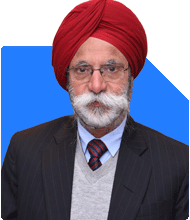How can I secure my future financially?
Ramalingam Kalirajan |9862 Answers |Ask -Follow
Mutual Funds, Financial Planning Expert - Answered on Oct 21, 2024
He has an MBA in finance from the University of Madras and is a certified financial planner.
He is the director and chief financial planner at Holistic Investment, a Chennai-based firm that offers financial planning and wealth management advice.... more

How can i secure my future financial condition?I am a contractual govt. Servant earning 45k monthly. Currently,i am holding a sip (SBI) regular hybrid equity@5000 monthly n RD of @9000 monthly.
Let’s break down your current position and then explore some actionable steps to help secure your financial future.
1. Assessing Your Current Situation
You are currently investing Rs 5,000 per month in a regular hybrid equity SIP, which is a balanced approach, and Rs 9,000 monthly in a recurring deposit (RD). While these are good starting points, let’s dive deeper into the benefits and limitations of these instruments:
SIP in Hybrid Fund: Hybrid funds balance equity and debt investments, providing moderate growth with reduced volatility. However, it is essential to ensure you’re in a fund that has consistently performed well over the long term. Actively managed funds tend to outperform index funds, as experienced fund managers can optimize portfolios in changing markets. I recommend staying with regular funds through a Certified Financial Planner (CFP), as they offer personalized guidance and help avoid common mistakes in direct investments.
Recurring Deposit: RDs offer guaranteed returns but at a lower interest rate compared to other investment options. They are relatively low-risk but are not the best long-term wealth-building tool due to their lower growth rate. The interest earned is also taxed according to your income slab, which can reduce your net returns.
To secure your future, we need to look at diversification, tax efficiency, and ensuring you are maximizing the growth potential of your investments.
2. Optimizing Your Investments
Shift Focus from RD to Mutual Funds
While RDs are safe, they do not offer high returns. To accumulate wealth over the long term, you should consider moving a portion of your RD investment into mutual funds. Equity mutual funds have the potential to provide significantly higher returns in the long term, especially when held for more than 5-10 years.
Why Mutual Funds Over RD?: Mutual funds offer better long-term returns, especially equity-oriented ones. You can choose funds based on your risk tolerance, time horizon, and financial goals. A well-managed portfolio of equity mutual funds will help you beat inflation and build a larger corpus over time.
Diversify Within Mutual Funds: Instead of relying on a single hybrid fund, diversify across different types of funds. Consider adding some exposure to large-cap and multi-cap funds. These funds focus on large, established companies that are stable, along with a mix of mid and small-cap stocks for additional growth potential.
3. Increase Your SIP Contribution
Your current SIP of Rs 5,000 is a good start, but you should aim to increase it over time to match your future goals. By increasing your SIP by a small percentage each year (e.g., 10% top-up annually), you can significantly increase your wealth without putting a sudden strain on your budget.
Why Increase SIP?: Increasing your SIP will allow you to leverage the power of compounding. Over time, this can lead to exponential growth in your investments. Make it a goal to gradually raise your monthly SIP contribution, which will accelerate your journey toward financial security.
4. Build an Emergency Fund
An emergency fund is critical to safeguard your financial stability. Since you are a contractual employee, the need for an emergency fund becomes even more crucial. Aim to set aside at least 6-12 months’ worth of living expenses in a liquid, easily accessible investment such as a savings account or liquid mutual fund.
Why Is It Important?: In case of any job uncertainties or unexpected expenses, your emergency fund will provide you with a financial cushion. This way, you won't have to dip into your investments, which can disrupt your long-term financial plans.
5. Life Insurance Coverage
If you don’t have adequate life insurance, it is important to secure one. Being a contractual employee, there is no guarantee of long-term employment benefits like pensions or gratuity, so having life insurance coverage will protect your loved ones financially in case of unforeseen circumstances.
Term Insurance: Opt for a term insurance plan instead of investment-linked insurance like ULIP. Term plans offer higher coverage for a lower premium. A rule of thumb is to get coverage worth at least 10 times your annual income.
Why Not ULIP?: Investment-cum-insurance policies such as ULIPs may seem attractive, but they typically come with high charges and lower returns. It’s more cost-effective to keep insurance and investments separate.
6. Health Insurance
Medical emergencies can drain your savings quickly. Ensure you have comprehensive health insurance coverage. Many government employees have access to healthcare plans, but as a contractual worker, ensure your coverage is sufficient to handle potential emergencies for yourself and your family.
Why Health Insurance?: With rising healthcare costs, a solid health insurance plan will protect you from financial stress in case of an emergency. It’s important to review your policy periodically and increase coverage as your family grows.
7. Tax Planning
Your investment choices should also take into account their tax efficiency. RD interest is taxable as per your income slab, which reduces your effective returns. On the other hand, long-term capital gains (LTCG) from equity mutual funds enjoy favorable tax treatment.
Use Tax-Saving Mutual Funds: You can consider adding an Equity Linked Savings Scheme (ELSS) to your portfolio. ELSS offers tax savings under Section 80C and has the potential for high returns.
Capital Gains Tax: When you eventually redeem your mutual funds, it’s important to know that gains above Rs 1.25 lakh from equity funds are taxed at 12.5%, and short-term gains are taxed at 20%. This is still more favorable than the tax on RD interest.
8. Retirement Planning
As a contractual government servant, your retirement benefits may be limited. Start planning early by creating a corpus that will provide for your post-retirement years.
Public Provident Fund (PPF): The PPF is an excellent option for long-term savings due to its tax-free returns and guaranteed interest. It also provides the safety of government backing.
Systematic Withdrawal Plans (SWP): As you approach retirement, you can consider moving your investments into safer instruments and using an SWP from your mutual funds to provide a steady post-retirement income.
9. Avoid Debt Dependency
Since you have not mentioned any ongoing loans apart from your RD and SIP contributions, it is essential to avoid getting into unnecessary debt. While short-term loans might seem tempting, they can reduce your ability to save and invest for your future. If you have any current debts, focus on repaying them as quickly as possible.
Why Avoid Debt?: Debt repayments take away from your potential savings. Paying off loans early means more money can be funneled into wealth-building investments, allowing you to achieve financial security faster.
10. Periodic Review of Financial Plan
A financial plan is not something you set and forget. It’s essential to review and adjust your investments periodically based on changing circumstances like your income, expenses, and financial goals.
Annual Review: Review your financial plan once a year to ensure it’s aligned with your long-term goals. Market conditions and personal situations change, so staying adaptable is key to building wealth.
Final Insights
Your current investment in SIP and RD is a great start, but to secure your future financial condition, diversification, increasing your SIP, and long-term financial planning are key. Build an emergency fund, invest in tax-efficient instruments, and focus on long-term wealth-building strategies. With consistent efforts, you can achieve financial security and peace of mind.
Finally, seek guidance from a Certified Financial Planner (CFP) to help you navigate your financial journey. They can offer personalized advice that aligns with your specific goals and risk tolerance.
Best Regards,
K. Ramalingam, MBA, CFP,
Chief Financial Planner,
www.holisticinvestment.in
https://www.youtube.com/@HolisticInvestment
You may like to see similar questions and answers below
Ramalingam Kalirajan |9862 Answers |Ask -Follow
Mutual Funds, Financial Planning Expert - Answered on Jun 06, 2024
Ramalingam Kalirajan |9862 Answers |Ask -Follow
Mutual Funds, Financial Planning Expert - Answered on Jul 18, 2024
T S Khurana |500 Answers |Ask -Follow
Tax Expert - Answered on Aug 01, 2024
Ramalingam Kalirajan |9862 Answers |Ask -Follow
Mutual Funds, Financial Planning Expert - Answered on Jan 29, 2025
Milind Vadjikar | Answer |Ask -Follow
Insurance, Stocks, MF, PF Expert - Answered on Mar 25, 2025
Ramalingam Kalirajan |9862 Answers |Ask -Follow
Mutual Funds, Financial Planning Expert - Answered on Jun 21, 2025
Nayagam P P |9526 Answers |Ask -Follow
Career Counsellor - Answered on Jul 28, 2025
Ravi Mittal |625 Answers |Ask -Follow
Dating, Relationships Expert - Answered on Jul 28, 2025
Samraat Jadhav |2394 Answers |Ask -Follow
Stock Market Expert - Answered on Jul 28, 2025
Ramalingam Kalirajan |9862 Answers |Ask -Follow
Mutual Funds, Financial Planning Expert - Answered on Jul 28, 2025
Samraat Jadhav |2394 Answers |Ask -Follow
Stock Market Expert - Answered on Jul 28, 2025
Ramalingam Kalirajan |9862 Answers |Ask -Follow
Mutual Funds, Financial Planning Expert - Answered on Jul 28, 2025
Nayagam P P |9526 Answers |Ask -Follow
Career Counsellor - Answered on Jul 28, 2025
Nayagam P P |9526 Answers |Ask -Follow
Career Counsellor - Answered on Jul 28, 2025
Dr Nagarajan J S K |2017 Answers |Ask -Follow
NEET, Medical, Pharmacy Careers - Answered on Jul 28, 2025
Patrick Dsouza |1338 Answers |Ask -Follow
CAT, XAT, CMAT, CET Expert - Answered on Jul 28, 2025



























